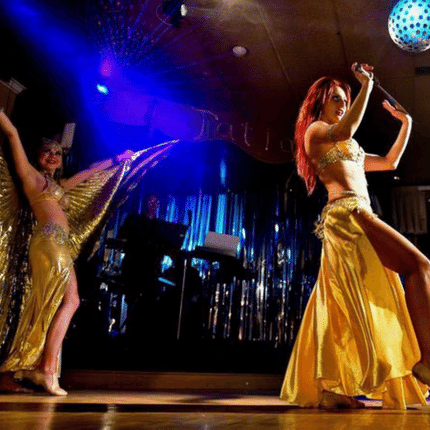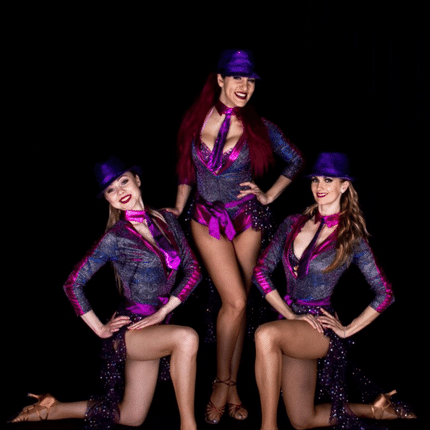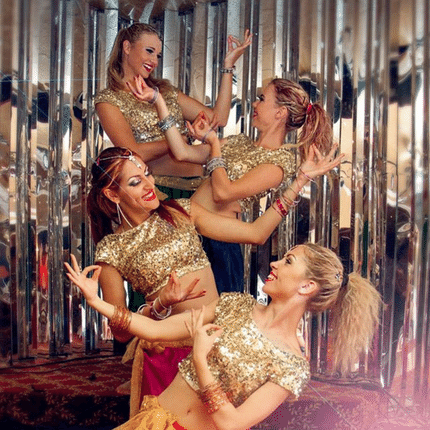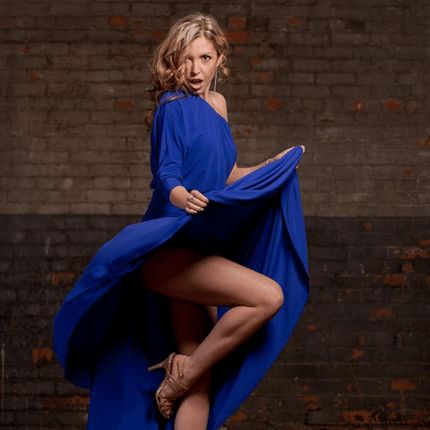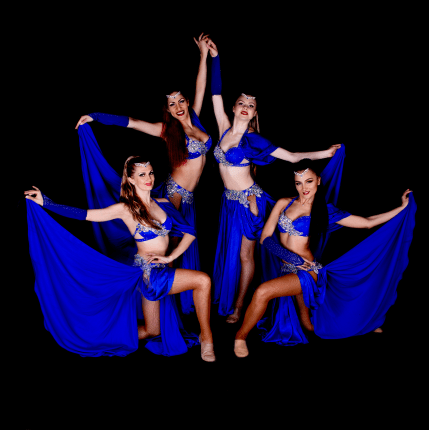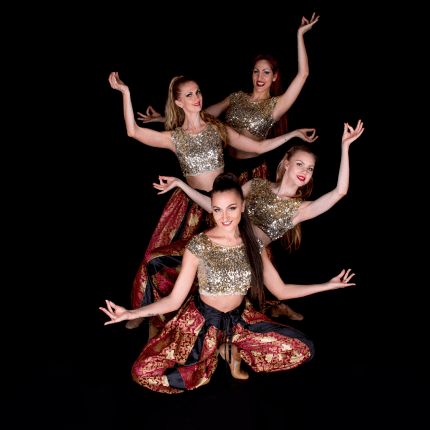Best Exercises For Dancers
A Dancer's Guide to Cross Training: Benefits, Goals, and Considerations
Are you a dancer looking to enhance your performance, improve your overall strength, and prevent injuries outside of the dance studio? Then you should definitely consider cross-training. Blending a good workout routine with your dance practice can give you a myriad of benefits for your body. That's why in this blog we will explore what cross-training can bring to the table for a dancer.
Strength training can help you develop and strengthen specific muscle groups that are pillars for doing complex dance movements. A well-planned workout for dancers can improve flexibility, enhance core strength and give you a nice boost of endurance.
Regardless if it is Pilates, resistance training, or body weight exercises, cross-training allows you to engage muscles in new ways, giving out a well-balanced physique. The entire body benefits from cross-training, because it fixes weaknesses and imbalances.
Is Exercise Good for Dancers?
The question "Should Dancers Cross Train?" often arises, as this is a topic of great interest among dancers. The answer is a big yes! Adding cross-training into a dancer's routine can bring numerous benefits and provide to their overall well-being and performances. By engaging in different exercises beyond the dance class, they can enhance their skills, prevent injuries and develop a stronger foundation for dance.
Benefits for Dancers
Higher Jumps
Cross-training can help dancers to jump higher because it strengthens the leg muscles and improves explosive power. By adding exercises like strength training and plyometrics, the ability to execute dynamic dance moves with grace and precision is enhanced.
Injury Prevention
Secondly, cross-training aids in injury prevention. Dancers often push their bodies to perform intricate movements and profound degrees of movement, which can lead to imbalances and strain on certain muscle groups. By including exercises that target specific areas prone to injury, such as the knees and hips, dancers can strengthen these regions and reduce the risk of common dance-related injuries.
Enhanced Mental Well-being
Exercise is a potent combatant against depression because of many factors. It has the ability to induce changes in the brain like reduced inflammation and neural growth, so the development of new activity patterns can contribute to the feeling of overall well-being and tranquility.
Also, exercising stimulates the release of endorphins, also known as "happy hormones" because they are powerful chemicals in the brain that uplift the mood and create a sense of positivity. Despite dancers' high levels of physical activity and exercise, the absence of adaptability to different exercise modalities can lead to a decline in their overall mental health.
However, cross-training offers a solution by introducing diverse stimuli. Engaging in a yoga class, for instance, can help dancers alter their thinking patterns, while participating in resistance training sessions can divert their focus from dance-specific methods. As a result, cross-training not only promotes the well-being of dancers but also cultivates a sense of happiness and groundedness.
Dancers who progressively improve their endurance levels and enhance their muscular endurance experience a reduction in both short-term and long-term injuries, along with a decreased occurrence of mental health issues. By combining regular dance lessons with an additional exercise program, dancers can achieve improved physical and mental fitness without compromising their aesthetic appearance.
Strength and Stability
Moreover, cross-training contributes to overall strength and stability. By engaging in exercises that focus on core strength, balance, and proprioception, dancers can improve their control and coordination, leading to stronger landings and enhanced execution of intricate dance steps.
HIRE FEMALE DANCERS: INCREDIBLE ENTERTAINMENT
3 sets of 6 with 90 seconds rest
The concept of "3 sets of 6 with 90 seconds rest" refers to a specific training protocol that can be beneficial for dancers. This training protocol is about doing 6 repetitions of 3 sets of an exercise, and resting for 90 between each set.
This allows dancers to focus on developing muscular endurance and building strength. Selecting exercises that target areas like the core, arms, or legs and performing them in this protocol can challenge muscles while maintaining proper technique and form. The rest period between the sets is for adequate recovery, so dancers can perform all repetitions with their maximum effort while maintaining the quality of the movement.
Also, this protocol can be used on exercises like push-ups, sit-ups, squats or dance-related movements, depending on the specific goals and areas of focus.
Incorporating "3 sets of 6 with 90 seconds rest" into a dancer's weekly routine can contribute to increased strength, improved muscular endurance, and better overall performance in dance. It is essential to consult with a dance instructor or a personal trainer to tailor this protocol to individual needs and ensure the proper execution of exercises.
Increased Stability and Control
Cross-training plays a crucial role in improving a dancer's control and stability, two essential elements for executing precise and controlled movements. While dance classes focus on technical skill and choreography, cross training adds an extra layer of training that targets specific areas necessary for enhanced control and stability.
Static Stretching
One aspect that contributes to increased control is static stretching. By incorporating it into dancing regimes, flexibility an ranges of motion are improved, which allows for a wider arrangement of movements. By gradually increasing the duration and density of the stretches. Dancers can get a better fluidity and longer-laster flexibility.
A Strong Core
Additionally, exercises for dancers that specifically target the core, such as planks or Pilates, can greatly enhance control and stability. A strong core provides a solid foundation for movement, allowing dancers to maintain balance and control over their body while executing intricate dance steps. By engaging in core-strengthening exercises, dancers can develop a stronger foundation and better control over their movements.
Leg Strengthening
Cross-training also involves strengthening the legs, glutes, and feet, which are fundamental for maintaining stability during dance routines. By incorporating exercises like lunges, squats, or calf raises, dancers can build strength in these areas and improve their ability to maintain balance and control in challenging dance sequences.
Furthermore, training in other forms of dance, such as hip-hop or contemporary, can make significant contributions. These dance styles often require different movement qualities and dynamics, challenging dancers to adapt and control their bodies in new ways. By exploring various dance genres, dancers can expand their movement repertoire and develop a broader range of control and stability.
Building Muscular Endurance and Strength
This is a crucial aspect of cross-training for dancers. While dance classes focus on technique and performance, incorporating strength training exercises into a dancer's routine can enhance their physical capabilities, elevate their performance level, and prevent injuries.
When you do strength training, you slowly add weights and resistance to the exercise, which allows to build and develop muscle mass. Doing so with exercises like lunges, squats or bicep curls will stimulate the growth of those muscles, improving the overall strength. This increased strength enables dancers to execute movements with more power, control, and precision.
Muscular Endurance
Muscular endurance is equally important for dancers, as it allows them to sustain their energy and maintain optimal performance throughout long and demanding dance routines. By incorporating high-repetition exercises into their cross training, dancers can enhance their endurance, enabling them to perform at their best for extended periods without fatigue.
In addition to traditional strength training exercises, dancers can benefit from specific exercises designed for their unique needs. Targeting muscle groups that are frequently engaged in dance, such as the legs, glutes, and core, can help dancers develop the strength necessary for executing challenging movements and maintaining proper alignment.
Cardiovascular Exercises
Cross-training also involves cardiovascular exercises that improve overall endurance and stamina. Engaging in activities like running, cycling, or swimming provides a great cardiovascular workout that complements dance training. Improved cardiovascular fitness translates to increased energy and better endurance during dance performances, allowing dancers to push themselves further and deliver captivating performances.
Furthermore, cross-training with a focus on strengthening the upper body, including the arms and chest, can bring significant benefits to dancers. Strengthening these areas not only improves the execution of movements that involve the upper body, such as lifts and partnering but also contributes to overall body balance and coordination.
This holistic approach to training enhances both their physical capabilities and performance quality, empowering them to excel in their dance journey.
Setting Goals
Setting clear and achievable goals is a fundamental aspect. By establishing specific objectives, dancers can design an effective and tailored cross-training program that aligns with their aspirations, addresses their weaknesses, and maximizes their overall development.
The first step in goal setting is to recognize areas for improvement. This could involve assessing technical skills, strength levels, flexibility, or specific aspects of dance performance that the dancer wishes to enhance. Seeking feedback from dance teachers or instructors can provide valuable insights into areas that require focus and attention.
Once the areas for improvement have been identified, specific and measurable goals can be established. For instance, a dancer may set a goal to increase leg strength to execute higher jumps or develop core stability for improved balance and control. These goals should be realistic and attainable within a given timeframe, taking into consideration the dancer's current abilities and training schedule.
In conclusion, cross-training offers dancers a multitude of benefits that extend beyond the dance studio. By embracing cross-training, dancers can unlock their full potential and thrive in their artistic journey.



